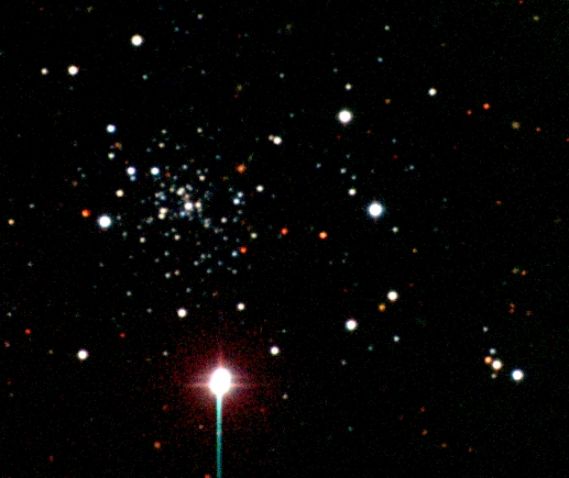
|
Credit: M. Siegel &
S. Majewski (UVA),
C. Gallart (Yale),
K. Cudworth (Yerkes),
M. Takamiya (Gemini),
Las Campanas Observatory
Explanation:
Globular star cluster
Palomar 13
has roamed the halo of our
Milky Way Galaxy for the last 12 billion years.
The apparently sparse cluster of stars just left of center in
this composite color digital image,
it is one of the smallest, faintest
globular
clusters known.
(The bright foreground star near bottom
is unrelated and creates the spiky imaging artifacts.)
Observations spanning forty years indicate
that Palomar 13's
galactic halo orbit
is a highly eccentric one which, every one or two billion
years, brings it relatively close to the galactic center.
With each close approach to the
Milky Way's central regions,
gravitational tidal forces
strip away
the delicately bound cluster stars.
In fact, detailed present day studies offer evidence
for a dramatic end to this dwindling cluster's tidal
tug of war.
Palomar 13's latest close approach was only
about 70 million years ago.
But, when Palomar 13 again approaches the galaxy, it
could well turn out to be
the cluster's
last stand.
Las Campanas Observatory
|
January February March April May June July August September October November December |
| ||||||||||||||||||||||||||||||||||||||||||||||||
NASA Web Site Statements, Warnings, and Disclaimers
NASA Official: Jay Norris. Specific rights apply.
A service of: LHEA at NASA / GSFC
& Michigan Tech. U.
Based on Astronomy Picture
Of the Day
Publications with keywords: globular cluster - palomar 13 - Milky Way
Publications with words: globular cluster - palomar 13 - Milky Way
See also:
